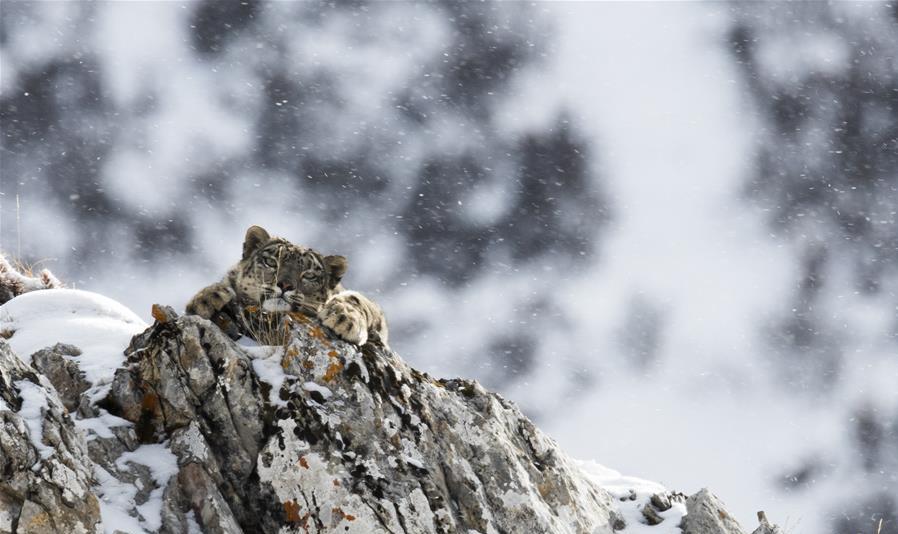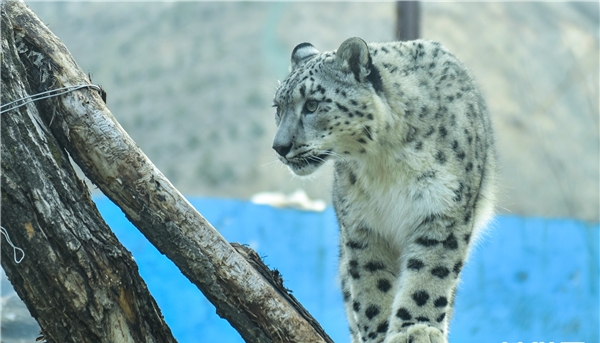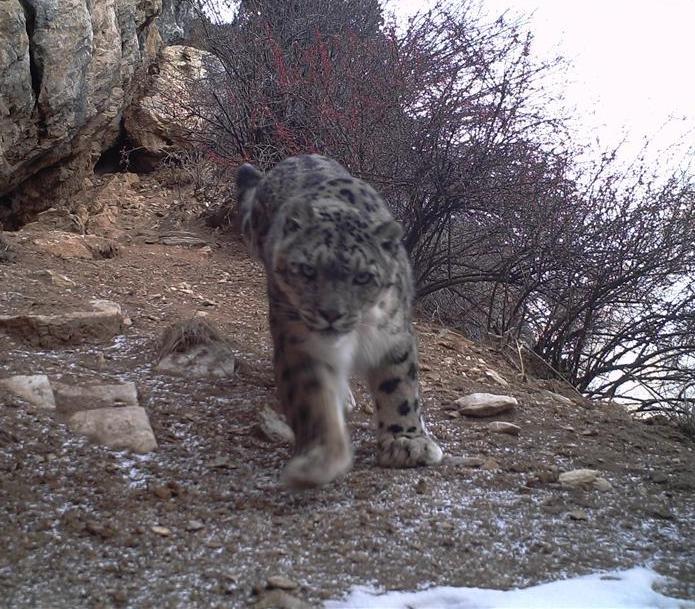Rare images of snow leopards in northwest China
Rare footage of snow leopards in northwest China's Qinghai Province are helping fill gaps in our knowledge of the endangered species.
A network of 154 infrared cameras over an area of 2,000 square kilometers in Qilianshan National Nature Reserve has captured the cats 251 times on film since May 2017, forestry authorities said Thursday.
Rare shots of the endangered big cat were captured by 37 cameras, including one showing five cubs, another showing five adult cats, and the third a snow leopard with a marmot in its mouth.
Snow leopards have great eyesight and are mostly active after dark, choosing to seek shelter among rocks or in caves in daylight. Scientists have dubbed them "mountain hermits."
Snow leopard is a Class A protected animal in China and the International Union for Conservation of Nature classified it as endangered-to-vulnerable last year. They live in the mountain ranges of central and south Asia at altitudes of 2,500 to 4,500 meters, with 60 percent of its habitats in China.
The images will add to the little that is known about snow leopard, its numbers and distribution. It is estimated that about 2,000 live in China's Qinghai, Xinjiang, Tibet, Sichuan and Gansu.
The Chinese Academy of Forestry (CAF), the Beijing Forestry University and the Qinghai Qilianshan Nature Reserve jointly conducted the research on the northeastern Qinghai-Tibetan Plateau, near Gansu Province.
"This is the first such large-scale wild animal monitoring since the nature reserve was established in 2014," says reserve head Han Qiang.
Researchers also collected the cats' droppings and footprints for further study.
Another 20 species of animals including brown bear, white-lipped deer, wolf, Tibetan fox and marmot were also spotted.
The snow leopard is a flagship species in Qilianshan, home to the headwaters of the Yellow River.
Conservation trickles down through the ecosystem, says CAF assistant engineer Xue Yadong. If big animals are protected, then so are other species, and by association, water sources.
"We will continue monitoring wildlife and establish a database of animals in the reserve."
Your Comment
Name E-mailRelated News
-
;
-
-

-
China home to snow leopards
China is home to between 2,000 and 2,500 snow leopards, which roam across the provincial level regions of Xinjiang, Tibet, Qinghai, Gansu, Sichuan, Yunnan and Inner Mongolia.
-
-
-

-
Qinghai tackles snow leopard breeding problems
At present, Xi'ning Wildlife Park has nine snow leopards and is the only snow leopard breeding base in China.
-
-
-

-
Snow leopards spotted for first time in eastern Tibet
Images of snow leopards were caught for the first time in eastern parts of southwest China's Tibet Autonomous Region.
-
Based in Lhasa, Tibet Vista is a Tibet travel agency that specialized in Tibet permit, and Tibet tours for both private and group travelers at a local price!
•4 Days Lhasa City Group Tour from USD 460 •8 Days Everest Base Camp Group Tour from USD 850 •15 Days Mt.Kailash Group Tour from USD 1780 •2016 Tibet Train Tours from Beijing, Shanghai, Chengdu, Xining,etc










